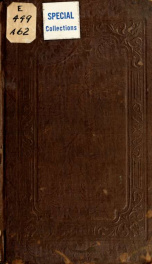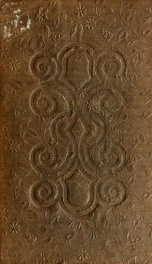American Anti-Slavery Society

The American Anti-Slavery Society (1833-1870) was an abolitionist society founded by William Lloyd Garrison and Arthur Tappan. Frederick Douglass was a key leader of the society and often spoke at its meetings. William Wells Brown was another freed slave who often spoke at meetings. By 1838, the society had 1,350 local chapters with around 250,000 members. Famous members included Theodore Dwight Weld, Lewis Tappan, James G. Birney, Lydia Maria Child, Maria Weston Chapman, Abby Kelley Foster, Stephen Symonds Foster, Henry Highland Garnet, Samuel Cornish, James Forten, Charles Lenox Remond, Lucy Stone, Robert Purvis, and Wendell Phillips. The society's headquarters was in New York City. From 1840 to 1870 it published a weekly newspaper, the National Anti-Slavery Standard. The argument that had been aroused over the Missouri Compromise quieted down considerably in the 1820s, only to be brought back to life by a series of events at the end of the decade. Serious debates over abolition took place in the Virginia legislature in 1829 and 1831; in the North discussion began about the possibility of freeing the slaves and then resettling them back in Africa (a proposal that led to the founding of Liberia). Agitation increased with the publication of David Walker's Appeal to the Colored Citizens of the World in 1829, Nat Turner's slave rebellion in 1831 and Andrew Jackson's handling of the nullification crisis that same year. According to Louis Ruchame's website, "The Turner rebellion was only one of about 200 slave uprisings between 1776 and 1860, but it was one of the bloodiest, and thus struck fear in the hearts of many white southerners. Nat Turner and more than 70 enslaved and free blacks spontaneously launched a rebellion in Southampton County, Virginia, in August 1831. They moved from farm to farm, indiscriminately killing whites along the way and picking up additional slaves. By the time the militia put down the insurrection, more than eighty slaves had joined the rebellion, and sixty whites lay dead. While the uprising led some southerners to consider abolition, the reaction in all southern states was to tighten the laws governing slave behavior."[1] That same year, South Carolina's opposition to the federal tariff led the legislature to declare that the law was null and void in the state, and the state's leaders spoke of using the militia to prevent federal customs agents from collecting the tax. President Andrew Jackson swept aside the states' rights arguments and threatened to use the army to enforce federal laws. In the face of Jackson's determination, the state backed down, but the episode raised fears throughout the South that it was only a matter of time before Congress would begin to tamper with slavery. Southern anxiety increased in 1833 with the founding of the American Anti-Slavery Society in Philadelphia. The society, while it promoted the greater good for slaves, was not met with welcome arms. According to Britannica, "The society's antislavery activities frequently met with violent public opposition, with mobs invading meetings, attacking speakers, and burning presses."[2] The society however could not expect everyone to agree with the idea of getting rid of slavery. In the mid 1830s, slavery had become so economically involved in the U.S. that to get rid of it would cause a major blow to the economy, especially in the south. A convention of abolitionists was called to meet in December 1833 at the Adelphi Building in Philadelphia.[3] The convention had sixty-two delegates, of which twenty-one were Quakers. The new American Anti-Slavery Society charged William Lloyd Garrison with writing the organization's new declaration. The document condemns the institution of slavery and accuses slave owners of the sin of being a "man-stealer".[4] It calls for the immediate abolition of slavery without terms, and is critical of the efforts of the American Colonization Society.[5] At the same time, it declares the group to be pacifist, and the signers agree- if necessary- to die as martyrs.[6] In 1839 the national organization split over basic differences of approach: Garrison and his followers were more radical than other members; they denounced the U.S. Constitution as supportive of slavery and insisted on sharing organizational responsibility with women. Another founding member who tends to get overlooked was clergyman Theodore S. Wright. Along with famous spokerpersons such as Tappan and Garrison, Wright agitated for temperance, education, black suffrage and land reform. According to Wright, "I will say nothing about the inconvenience which I have experienced myself, and which every man of color experiences, though made in the image of God. I will say nothing about the inconvenience of traveling; how we are frowned upon and despised. No matter how we may demean ourselves, we find embarrassments everywhere. But, this prejudice goes farther. It debars men from heaven. While sir, slavery cuts off the colored portion of the community from religious privileges men are made infidels. What, they demand, is your Christianity? How do you regard your brethren? How do you treat them at the Lord's table? Where is your consistency in talking about the heathen, traversing the ocean to circulate the Bible everywhere, while you frown upon them at the door? These things meet us and weigh down our spirits...."[7] Many founding members used a practical approach to slavery saying economically it did not make sense. Wright used the rhetoric of religion to bring out empathy towards African-Americans and presented it as a moral sin towards those who were persecuted. The society was the scene for many disagreements between Garrison and prominent New York and midwestern abolitionists. One issue between the two sides was whether abolitionists should enter politics as a distinct party. Another issue concerned the role of women in the abolitionist movement. Garrison urged that positions equal to men be given to women. A minority of anti-feminist delegates left the society as a result. Frederick Douglass had seen the frustration that Garrison felt towards those who disagreed with him, but wrote many letters to Garrison describing to him the details of the prejudices Slavery had caused. One in particular was directed towards the church. According to Douglass, "In the South I was a member of the Methodist Church. When I came north, I thought one Sunday I would attend communion, at one of the churches of my denomination, in the town I was staying. The white people gathered round the altar, the blacks clustered by the door. After the good minister had served out the bread and wine to one portion of those near him, he said, "These may withdraw, and others come forward"; thus he proceeded till all the white members had been served. Then he drew a long breath, and looking out towards the door, exclaimed, "Come up, colored friends, come up! for you know God is no respecter of persons!" I haven't been there to see the sacraments taken since."[8] It is in these letters that Douglass hoped would remind Garrison as to why slavery should be abolished. But unfortunately, Douglass' reminder did not ease the mind of those against Garrison. The Liberty Party was a separate anti-slavery society that broke away from the American Anti-Slavery Society in 1840 due to disagreements surrounding Garrison's leadership . The disruption of the American Anti-Slavery Society, however, caused little damage to abolitionism. Because of this cleavage in national leadership, the bulk of the activity in the 1840s and '50s was carried on by state and local societies. The antislavery issue entered the mainstream of American politics through the Free Soil Party (1848–54) and subsequently the Republican Party (founded in 1854). The American Anti-Slavery Society was formally dissolved in 1870, after the Civil War and Emancipation. The American Anti-Slavery Society should not be confused with the American Anti-Slavery Group, a modern-day organization.
do you like this author?
What readers are saying
What do you think? Write your own comment on this book!
write a commentWhat readers are saying
What do you think? Write your own comment on this author!
write a commentBook list

The American anti-slavery almanac, for ... : calculated for New York, adapted to the northern and middle states v.1 no.5 copy.2
Series:
Unknown
Year:
Unknown
Raiting:
4/5
Drake, M. Almanacs Birney Anti-Slavery Collection
Show more
add to favoritesadd In favorites
Book list

The American anti-slavery almanac, for ... : calculated for New York, adapted to the northern and middle states v.1 no.5 copy.2
Series:
Unknown
Year:
Unknown
Raiting:
4/5
Drake, M. Almanacs Birney Anti-Slavery Collection
Show more
add to favoritesadd In favorites

Annual Report no.1
Series:
Unknown
Year:
Unknown
Raiting:
3/5
Vols. 8-21 never published Reports for 1857 and 1858 published in one volume Birney Anti-Slavery Collection EISENHOWER: 11,301:sl Some numbers restricted--photocopies available
Show more
add to favoritesadd In favorites

Annual Report no.2
Series:
Unknown
Year:
Unknown
Raiting:
3.5/5
Vols. 8-21 never published Reports for 1857 and 1858 published in one volume Birney Anti-Slavery Collection EISENHOWER: 11,301:sl Some numbers restricted--photocopies available
Show more
add to favoritesadd In favorites

Annual Report no.3
Series:
Unknown
Year:
Unknown
Raiting:
4.5/5
Vols. 8-21 never published Reports for 1857 and 1858 published in one volume Birney Anti-Slavery Collection EISENHOWER: 11,301:sl Some numbers restricted--photocopies available
Show more
add to favoritesadd In favorites

Annual Report no.4
Series:
Unknown
Year:
Unknown
Raiting:
4/5
Vols. 8-21 never published Reports for 1857 and 1858 published in one volume Birney Anti-Slavery Collection EISENHOWER: 11,301:sl Some numbers restricted--photocopies available
Show more
add to favoritesadd In favorites

Annual Report no.5
Series:
Unknown
Year:
Unknown
Raiting:
4.5/5
Vols. 8-21 never published Reports for 1857 and 1858 published in one volume Birney Anti-Slavery Collection EISENHOWER: 11,301:sl Some numbers restricted--photocopies available
Show more
add to favoritesadd In favorites
![Annual Report no.6]_cover](/img/standard/standard_book.png)
Annual Report no.6]
Series:
Unknown
Year:
Unknown
Raiting:
5/5
Vols. 8-21 never published Reports for 1857 and 1858 published in one volume Birney Anti-Slavery Collection EISENHOWER: 11,301:sl Some numbers restricted--photocopies available
Show more
add to favoritesadd In favorites

Annual Report no.22n
Series:
Unknown
Year:
Unknown
Raiting:
4.5/5
Vols. 8-21 never published Reports for 1857 and 1858 published in one volume Birney Anti-Slavery Collection EISENHOWER: 11,301:sl Some numbers restricted--photocopies available
Show more
add to favoritesadd In favorites

Proceedings of the American Anti-Slavery Society, at its second decade
Series:
Unknown
Year:
Unknown
Raiting:
4/5
Birney Anti-Slavery Collection EISENHOWER: Copy 2 measures 20 cm EISENHOWER: 11,301:sl Copy 2 restricted
Show more
add to favoritesadd In favorites
![Proceedings of the American anti-slavery society, at its third decade, held in the city of Philadelphia, Dec 3d and 4th, 1864 [i.e. 1863]_cover](/img/standard/standard_book.png)
Proceedings of the American anti-slavery society, at its third decade, held in the city of Philadelphia, Dec 3d and 4th, 1864 [i.e. 1863]
Series:
Unknown
Year:
Unknown
Raiting:
2.5/5
"Catalogue of anti-slavery publications in America," 1750-1863, by Samuel May, jr. : Birney Anti-Slavery Collection EISENHOWER: Copy 2 measures 20 cm EISENHOWER: 11,301:sl Copy 2 restricted
Show more
add to favoritesadd In favorites

The Anti-slavery record vol.1 no.7
Series:
Unknown
Year:
Unknown
Raiting:
5/5
Birney Anti-Slavery Collection EISENHOWER: Volume 3 inscribed in pencil by William Birney EISENHOWER: Reproduced in microform and located in the A-V Dept. under the call number: Film no. A .A45 EISENHOWER: Microform copy is in series: American periodical series 1800-1850
Show more
add to favoritesadd In favorites

The Anti-slavery record vol.3 no.9
Series:
Unknown
Year:
Unknown
Raiting:
4.5/5
Birney Anti-Slavery Collection EISENHOWER: Volume 3 inscribed in pencil by William Birney EISENHOWER: Reproduced in microform and located in the A-V Dept. under the call number: Film no. A .A45 EISENHOWER: Microform copy is in series: American periodical series 1800-1850
Show more
add to favoritesadd In favorites

The Anti-slavery record vol.3 no.1
Series:
Unknown
Year:
Unknown
Raiting:
4/5
Birney Anti-Slavery Collection EISENHOWER: Volume 3 inscribed in pencil by William Birney EISENHOWER: Reproduced in microform and located in the A-V Dept. under the call number: Film no. A .A45 EISENHOWER: Microform copy is in series: American periodical series 1800-1850
Show more
add to favoritesadd In favorites

The Anti-slavery record vol.2 no.1
Series:
Unknown
Year:
Unknown
Raiting:
3.5/5
Birney Anti-Slavery Collection EISENHOWER: Volume 3 inscribed in pencil by William Birney EISENHOWER: Reproduced in microform and located in the A-V Dept. under the call number: Film no. A .A45 EISENHOWER: Microform copy is in series: American periodical series 1800-1850
Show more
add to favoritesadd In favorites

Quarterly anti-slavery magazine
Series:
Unknown
Year:
Unknown
Raiting:
3.5/5
Birney Anti-Slavery Collection Editor: Elizur Wright
Show more
add to favoritesadd In favorites

Quarterly anti-slavery magazine
Series:
Unknown
Year:
Unknown
Raiting:
3.5/5
Birney Anti-Slavery Collection Editor: Elizur Wright
Show more
add to favoritesadd In favorites
What readers are saying
What do you think? Write your own comment on this author!
write a commentif you like American Anti-Slavery Society try:
readers also enjoyed
What readers are saying
What do you think? Write your own comment on this author!
write a commentGenre
if you like American Anti-Slavery Society try:
readers also enjoyed
Do you want to exchange books? It’s EASY!
Get registered and find other users who want to give their favourite books to good hands!



